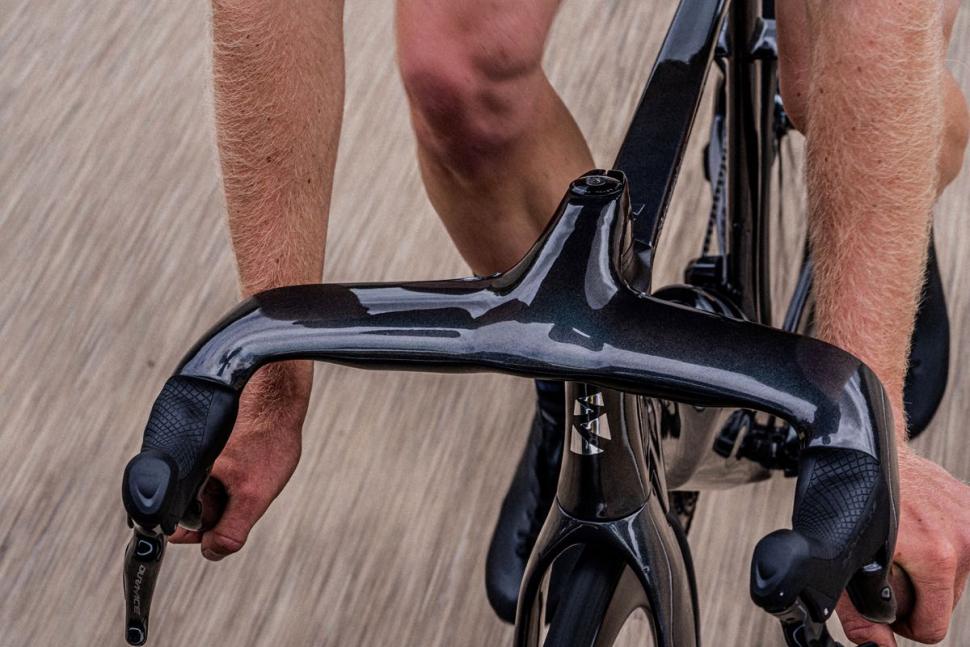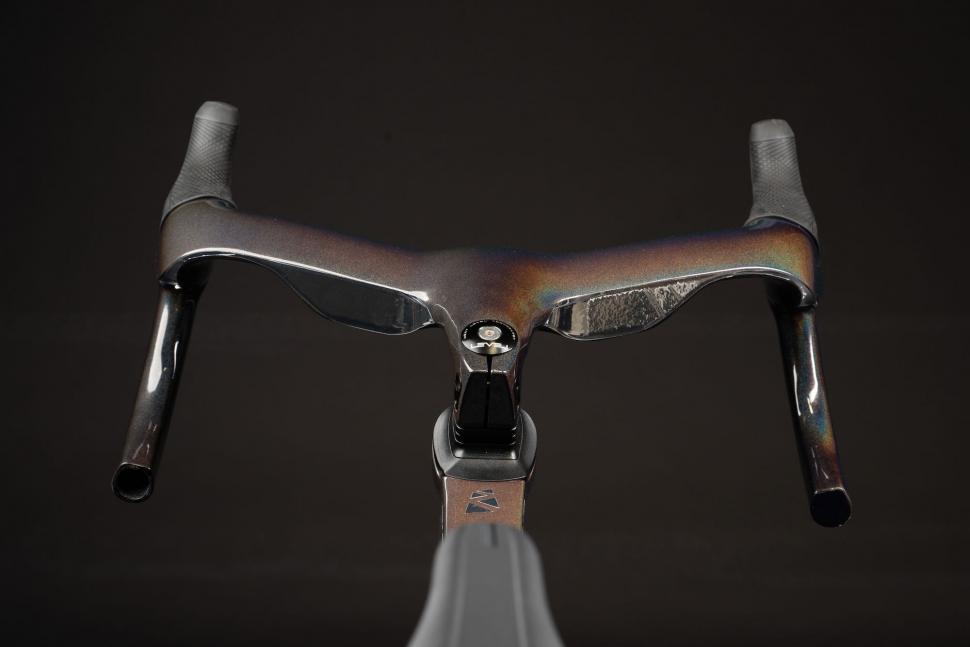- News
- Reviews
- Bikes
- Accessories
- Accessories - misc
- Computer mounts
- Bags
- Bar ends
- Bike bags & cases
- Bottle cages
- Bottles
- Cameras
- Car racks
- Child seats
- Computers
- Glasses
- GPS units
- Helmets
- Lights - front
- Lights - rear
- Lights - sets
- Locks
- Mirrors
- Mudguards
- Racks
- Pumps & CO2 inflators
- Puncture kits
- Reflectives
- Smart watches
- Stands and racks
- Trailers
- Clothing
- Components
- Bar tape & grips
- Bottom brackets
- Brake & gear cables
- Brake & STI levers
- Brake pads & spares
- Brakes
- Cassettes & freewheels
- Chains
- Chainsets & chainrings
- Derailleurs - front
- Derailleurs - rear
- Forks
- Gear levers & shifters
- Groupsets
- Handlebars & extensions
- Headsets
- Hubs
- Inner tubes
- Pedals
- Quick releases & skewers
- Saddles
- Seatposts
- Stems
- Wheels
- Tyres
- Health, fitness and nutrition
- Tools and workshop
- Miscellaneous
- Buyers Guides
- Features
- Forum
- Recommends
- Podcast
TECH NEWS
 2022 Ribble Ultra SL R testing - 1.jpeg
2022 Ribble Ultra SL R testing - 1.jpegRibble Ultra bar: Shimano doesn’t recommend use with its STI levers
One of the most radical features of the new Ribble Ultra aero road bike that we told you about last week is the new Ultra bar that accepts brake/shifter lever via a direct mount system, but both Shimano and SRAM have said that they do not recommend ditching the clamp bands when using their products.
Essentially, Ribble has come up with a design where the dual-control lever bolts directly to the Ultra bar.
Check out Ribble's radical new Ultra aero road bike
Ribble says, “The lever is positioned in the conventional location and attached to the handlebar using a removable and adjustable plate. The plate is accessible via a cavity at the rear of the bar and allows the lever to be adjusted through the horizontal and vertical planes.”
This eliminates the need for the clamp band that usually goes around the drop section of the handlebar to hold the dual-control lever in place.
Ribble’s design gives you 15° of side-to-side movement and just under 30mm of vertical adjustment.
The idea is to give more freedom to the designers who no longer need to use a round profile for the lever clamp point or the lower sections of the bar. Ribble says that this allowed it to improve the bar in terms of both aerodynamics and ergonomics.
However, component brands say that their products should only be used in accordance with existing user manuals.
“Our products are designed and tested to be used as they arrive for our customers,” says Shimano’s Ben Hillsdon. “Our products aren't approved for usage with modifications. If products are modified we can't guarantee they will work as intended. That's why the user manuals state: ‘Do not disassemble or modify the product other than as stated in the information contained in this dealer's manual.’
“Our user manuals also give a severity rating to the recommended practices. The recommendations are in place to highlight danger, warning or caution.
“Regarding the shifters, the recommendation is a caution. It reads: ‘The clamp band, clamp bolt, and clamp nut are not compatible with other products. Do not use with components that are used in other products.’
“Failure to follow that particular instruction could cause personal injury or physical damage to equipment and surroundings.
“I can't comment on Ribble's testing procedures but as far as Shimano manuals go, we recommend using our products as it is stated in the dealer manuals.”
You can check out the recommended practice on page 35 here.
SRAM kept it brief. The brand’s Daniel Lategan said, “The Ribble handlebar is not something that we have tested and SRAM parts should always be used according to user manuals and frame fit specification.”
To be completely fair, this is what you’d expect these brands to say. There’s no reason to suspect that anything will go wrong with Ribble’s mounting system, but if it does Shimano and SRAM wouldn’t want to be held liable because the levers aren’t attached to the bar in the way intended.
Ribble said, "The new Ultra bar has been designed to be compatible and tested with all current brake lever manufacturer systems including SRAM and Shimano, utilising the manufacturers supplied hardware (excluding the band) and recommended torque.
"Our new design challenges the conventional band type clamping mechanism enabling significantly more scope for handlebar design from an aerodynamic, ergonomic and functional perspective. The new design also offers a larger, more consistent and therefore stronger clamping area which is particularly effective with carbon fibre handlebars."
Mat has been in cycling media since 1996, on titles including BikeRadar, Total Bike, Total Mountain Bike, What Mountain Bike and Mountain Biking UK, and he has been editor of 220 Triathlon and Cycling Plus. Mat has been road.cc technical editor for over a decade, testing bikes, fettling the latest kit, and trying out the most up-to-the-minute clothing. We send him off around the world to get all the news from launches and shows too. He has won his category in Ironman UK 70.3 and finished on the podium in both marathons he has run. Mat is a Cambridge graduate who did a post-grad in magazine journalism, and he is a winner of the Cycling Media Award for Specialist Online Writer. Now over 50, he's riding road and gravel bikes most days for fun and fitness rather than training for competitions.
Latest Comments
- brooksby 22 min 31 sec ago
Drivers are getting their knickers in a twist over the width of this new cycle path...
- Steve K 24 min 41 sec ago
Yeah, I'll give you that ...
- BIRMINGHAMisaDUMP 32 min 39 sec ago
About 20 years ago I was delivering a work shop in a school in Islington (for those who fall for the media myth that Islington is some kind of...
- BIRMINGHAMisaDUMP 48 min 42 sec ago
'What they are trying to do is make a Holland of us. It’s one of those woke agenda schemes.”. LOL 😂
- BIRMINGHAMisaDUMP 55 min 23 sec ago
They still have all those brexit benefits they can brag about.
- timmyotool 1 hour 45 min ago
The only gilet I'd buy would be the ultra packable type, and I've not seen anything lighter (sub 40g) than the sportful ultralight. That's now...
- marmotte27 3 hours 21 min ago
Don't forget, each of these places is a life hazard.
- VeloUSA 5 hours 57 min ago
It seems what you're searching for is a USB Micro to USB Type-C.
- Owd Big 'Ead 7 hours 59 min ago
Shetland Islanders must be a right bunch of Jessie's these days. The total population of the islands is less than 23,000 and Lerwick where the...



Add new comment
12 comments
I guess the question is what happens in a crash?
I've never seen a Shimano lever detach in mangled bikes, though some SRAM ones do snap more readily under normal usage. .
If the logic is that there is potential for a crash to create a pointy object that could impale the rider then there is at least a question to answer.
Ribble may have done stress tests ensuring that it can maintain a suitable load from a straining rider, but have they done crash tests - might a rotating band absorb an impact in the way a different mounting system might not? Having been behind a rider hitting the deck a few times, their levers are always moved as the rider tends to ride into the ground as they fall.
Good point, the few times I've crashed the shifter normally rotates inwards (and needs a small amount of force to push it back). If it can't do this does the shifter/handlebar snap?
When I did the old 'drive into a multi-storey car park forgetting your bike is on the roof' thing my 105 shifters took the brunt of the collision. They broke in the sense that they didn't work afterwards and needed replacing, but they stayed attached to the bike,
I assume what this means is, anything that goes wrong with Shimano/Sram shifters on an ultrabar, Ribble will be liable? Ballsey.
Bit of a storm in a tea cup this. The user's relationship is with Ribble not Shim/Sram. As long as Ribble are bearing the risk of both warantee failures and (god forbid) worst case injury from a snapped bar then there's nothing to see here.
Of course, some journalist has asked these brands what they think of that. And of course, as stated in the above article, such brands, from a liability point of view, and out of fear for a bad rep if anything happens, respond as expected.
Next up: one of the brands will create a similar interface, (test it according to their standards,) try to patent it, and try to license it. Or make it proprietary so that only in-house bars can be used (which is a safer bet). Bingo!
Apart from that: a band may not be perfect given the shape of some handle bars, but it grips around a tube that distributes forces. A plate interface relies on the strenght of the material retaining the plate to handle all forces. That material better be very strong.
If I've understood the description correctly the plate sounds like a variation of the semi-circular wedges you get on seat posts. Even having your hands pulling up and down on the hoods in a sprint or hill climb isnt going to compare to having your arse whacking up and down on a seat. If you look at the bands they are pretty thin metal.
I dont think strength will be a problem.
It's the material that holds the plate that can be less strong. Currently there's an entire tube that needs to give before the clamp can entirely come detached.
Peak torque did a video of when MVDP's bars snapped on his Canyon and he said Canyon use their own clamp design, which may well have caused the failure. I know Canyon have since recalled the bikes (might not be for this issue) but Shimano or any of the other manufacturers didn't come out and say anything about that.
I'm no engineer but as I understood it his point was a simple one: clamps traditionally (Shimano et al) have a square edge but attach to a round surface (the bar) and so have the potential to cause stress points and failure. He recommended a simple fix: make the clamp edges chamfered. Has any manufacturer done that?
It wasn't a shimano clamp though, it was a canyon clamp and, IIRC, PeakTorque suggested that it was because canyon had put the nut at the bar end allowing the bolt to pass through and touch the bar. Shimano (et al) put the bolt the bar end and the nut in the lever. You actually screw the nut onto the bolt and can't mark the bar no matter how far you screw it on.
As far as the lever is concerned i don't see a problem with the ribble attachment. It's a threaded stud the same as a standard clamp is.
Yeah the standard Shimano clamp is a thin steel band, which is both strong yet slightly 'flexible' in relative terms compared to the thicker rigid alloy one that Canyon designed. Add in the sharp edges on the alloy and the Canyon one was potentially creating a stress raiser at the bar/clamp interface which may lead to cracks in the carbon bar. The Shimano band shouldn't ever cause the same stress raiser, as the band will deform slightly to spread the load over a much bigger area.